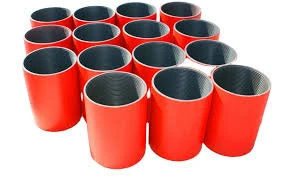- Afrikaans
- Albanian
- Amharic
- Arabic
- Armenian
- Azerbaijani
- Basque
- Belarusian
- Bengali
- Bosnian
- Bulgarian
- Catalan
- Cebuano
- Corsican
- Croatian
- Czech
- Danish
- Dutch
- English
- Esperanto
- Estonian
- Finnish
- French
- Frisian
- Galician
- Georgian
- German
- Greek
- Gujarati
- Haitian Creole
- hausa
- hawaiian
- Hebrew
- Hindi
- Miao
- Hungarian
- Icelandic
- igbo
- Indonesian
- irish
- Italian
- Japanese
- Javanese
- Kannada
- kazakh
- Khmer
- Rwandese
- Korean
- Kurdish
- Kyrgyz
- Lao
- Latin
- Latvian
- Lithuanian
- Luxembourgish
- Macedonian
- Malgashi
- Malay
- Malayalam
- Maltese
- Maori
- Marathi
- Mongolian
- Myanmar
- Nepali
- Norwegian
- Norwegian
- Occitan
- Pashto
- Persian
- Polish
- Portuguese
- Punjabi
- Romanian
- Russian
- Samoan
- Scottish Gaelic
- Serbian
- Sesotho
- Shona
- Sindhi
- Sinhala
- Slovak
- Slovenian
- Somali
- Spanish
- Sundanese
- Swahili
- Swedish
- Tagalog
- Tajik
- Tamil
- Tatar
- Telugu
- Thai
- Turkish
- Turkmen
- Ukrainian
- Urdu
- Uighur
- Uzbek
- Vietnamese
- Welsh
- Bantu
- Yiddish
- Yoruba
- Zulu
Guidelines for Proper Nipple Seating in Various Applications
The Intricacies of Seating Nipple Design A Focus on Engineering and Functionality
In the world of mechanical engineering, the seating nipple plays a crucial role in various applications ranging from automotive engineering to aerospace. This seemingly simple component is essential for ensuring that fluid connections remain leak-proof under pressure. In this article, we explore the significance of seating nipples, their design considerations, and the impact they have on overall system performance.
Seating nipples are typically designed to provide a secure fit between two components, often involving a male and female interface. The primary purpose of a seating nipple is to create a barrier that contains fluids, gases, or other substances, preventing leaks that could lead to system failure or safety hazards. The efficiency of a seating nipple largely depends on its design, which must accommodate factors such as material selection, surface finish, and the specific application it is intended for.
One of the critical aspects of seating nipple design is the material from which it is made. Common materials include brass, stainless steel, and various polymers. The choice of material is influenced by several factors, including the operating temperature, pressure, and the chemical nature of the fluids being contained. For instance, in high-temperature applications, materials with high thermal stability and resistance to corrosion are preferred. On the other hand, lightweight plastics may be used in lower-pressure scenarios where weight savings are paramount.
seating nipple

Another vital consideration in designing seating nipples is the surface finish. A smooth surface can significantly enhance the sealing performance by maximizing the contact area between the nipple and the connected part. However, in some cases, a textured surface may be beneficial, as it can help retain lubrication or create a mechanical interlock. Engineers must carefully evaluate these factors to optimize the performance of the seating nipple in real-world applications.
Tolerances are also critical in seating nipple design. The dimensions of the nipple must adhere to precise specifications to ensure a proper fit. Tolerances that are too loose can lead to leakage, while overly tight tolerances may make assembly difficult or create excessive stress on the components. Therefore, engineers often rely on specialized software and testing methods to fine-tune the design and manufacture of seating nipples.
The role of seating nipples extends beyond mere leakage prevention; they also contribute to the overall efficiency of fluid systems. By ensuring that connections are airtight, seating nipples help maintain pressure within hydraulic or pneumatic systems, thereby enhancing their performance. This efficiency is vital in applications where performance and reliability are paramount, such as in aircraft hydraulics or automotive brake systems.
In conclusion, the design of seating nipples may seem straightforward, but it encompasses a multitude of engineering principles and considerations. From material selection to surface finish and tolerances, each aspect plays a significant role in ensuring the functionality and reliability of these critical components. As industries continue to evolve and demand higher levels of performance and safety, the importance of well-designed seating nipples will only grow, reflecting their integral role in engineering excellence.
-
Tubing Pup Joints: Essential Components for Oil and Gas OperationsNewsJul.10,2025
-
Pup Joints: Essential Components for Reliable Drilling OperationsNewsJul.10,2025
-
Pipe Couplings: Connecting Your World EfficientlyNewsJul.10,2025
-
Mastering Oilfield Operations with Quality Tubing and CasingNewsJul.10,2025
-
High-Quality Casing Couplings for Every NeedNewsJul.10,2025
-
Boost Your Drilling Efficiency with Premium Crossover Tools & Seating NipplesNewsJul.10,2025







